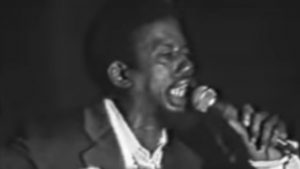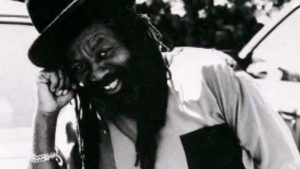I toyed with the idea of letting my twin sons grow locks.

The dreadlocks, in my view, still remains inextricably linked to the power of the Jamaican identity.
Essentially, what the dreadlocks represented throughout the island’s history is what it still seeks to represent today. What has evolved, however, are the perceptions predominantly attached to the message the locks transmits. I find even in instances where this look was introduced initially as a statement of a fashion pret a porter, it eventually creates portals for self examination which often translates into a deeper expression of self discovery. In time, sporters of the long tresses consider themselves advocates of the natural order and liberated from cosmetic bondage.
A notable characteristic of my generation is a re-introduction of the dreadlocks and the story it has long tried to impart to society, particularly to the faction which tried, but to no avail, to suppress the locked look with pejorative labels. This re-launched influence was spawned primarily among the university population. Students, with a thirst to exhibit a renewed consciousness of the legacies embedded within the Jamaican heritage, quickly swapped the perceived coiff and groom for the natty appearance. This wave of new-found appreciation accounted for a corresponding discernment of common identity and reconnaisance among the various hues of the Jamaican diaspora world over.
An intrinsic part of the institutions earmarked as socialization delivery systems, is a marginalization of those who choose to employ the locks as a pivotal element of their outrage against callous disregard for justice. Throughout my high school years, marginalization and victimization of collegues who sported locks, were vetoed in no uncertain terms by those with the responsibility to instruct and guide our outlook of the world. They were led to believe they were their hair and by extension, their choosing to be a part of this movement translates into their choosing an indictment on their progress in the Jamaican society. What was even more regrettable, it soon became the norm for unassuming students to join forces with the authorities that instituted these by-laws which denounced any positive traits visible in other students with the ‘high bun.’
My high school experience is an interesting point of reference by way of a conspicuous transformation among the same group who were taught to discriminate not exclusively against Rastafarians, but against anyone who had the courage to lock their hair from the accepted and celebrated hop-scotch politics and the hypocrisies knitted within the fibre of the island’s pigmentocracy.
As Shakespeare illustrated in Measure for Measure, the degree to which one is repressed is twice the degree to which one rebels. By the time they are introduced to the university environment, the response of these former sympathizers of marginalization to the re-introduction to the beauty of heritage, is met with a wave of support for what the dreadlocks purports.
Despite its popularity among the recent educated sect and a revered international allure, supporters of the locks continue to be magnets of ridicule and societal pressures of conformity. It seems those opposed to what the locks represents are still unaware that this had its nesting place in a desire to debunk the influence of conformity.
I therefore experienced no jolt of surprise when the idea to locks the boys faced vehement opposition. The idea was shot down by everyone to whom it was mentioned. My mother quotes the ills of this practice from the bible as saying long hair (on men) is some form of disgrace in the eyes of the Lord. I am almost sure this verse was expressed within a specific context that may now be xenophobic to my era, but I decided against any further engagement or exploration of this view.
My friends, who I know have our best interest at heart, in different ways, rebuked the idea using the same argument: this is a choice a mother should not make for her children. Am I not making a choice for them by taking them to the barber to have their curls snipped?
I relented amidst the overwhelming response in opposition to its actualization, but cannot help but wonder, however, if these views are remnants of the marginalization machinery.
Are we inadvertently perpetuating discrimination against the dreadlocks?
Have we, without even knowing, given society our nod of approval for subduing any further rise of the power of the dreadlocks?
Are we, even out of genuine concern for the welfare of those who wish to grow locks, encouraging marginalization by allowing the history of biases against the movement to dictate how we view dreadlocks today?
How prophetic are Marley’s words that often eschew the ways in which marginalization and two-faced politics are incubators for intolerance and anomalous to self respect.
Raquel is a writer and communications consultant in Toronto, [email protected]












